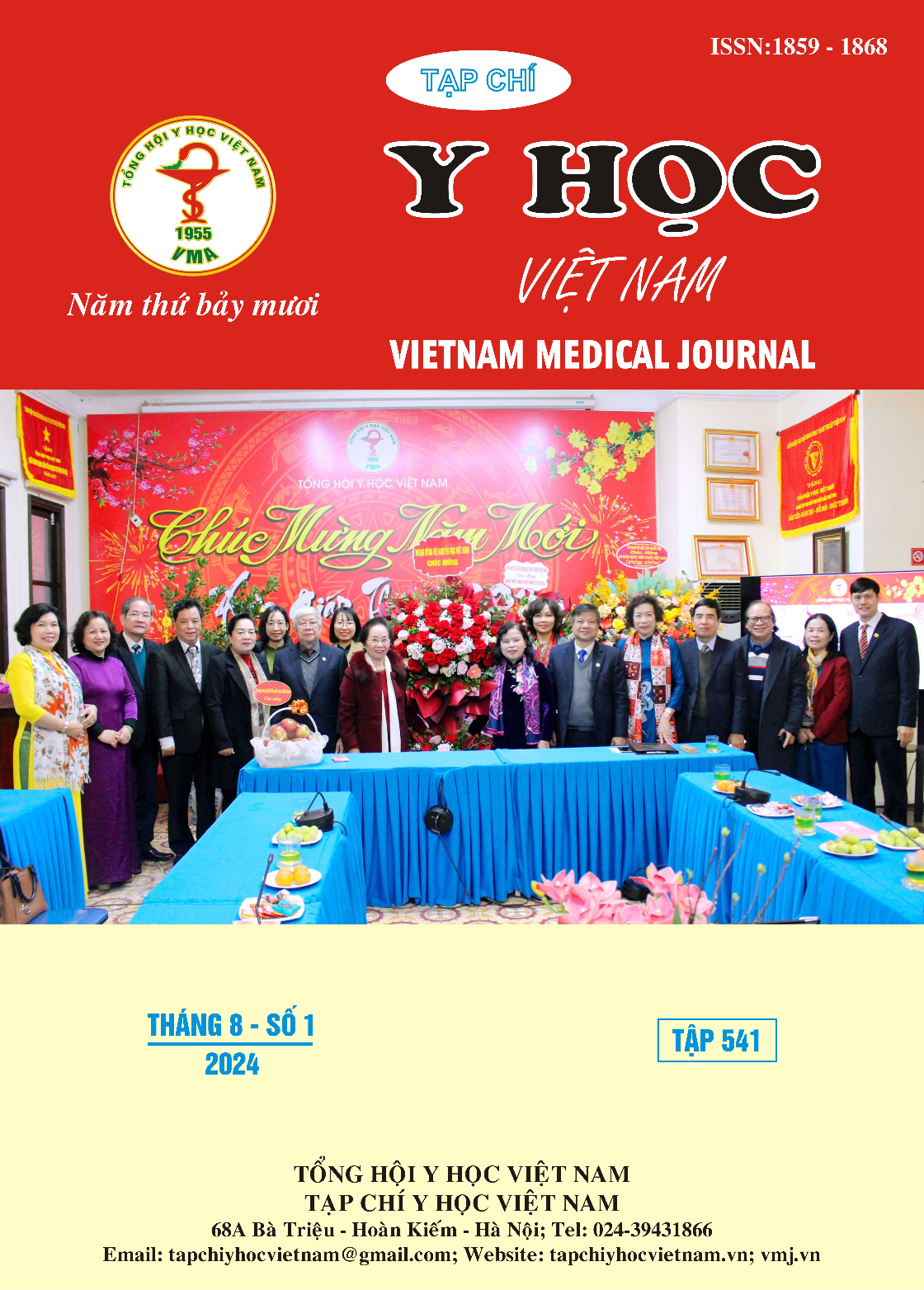STUDY ON THE CHARACTERISTICS OF PROPHYLACTIC ANTIBIOTICS IN OBSTETRIC AND GYNECOLOGICAL SURGERY AT A HOSPITAL IN CAN THO IN 2023-2024
Main Article Content
Abstract
Background: The use of prophylactic antibiotics has been proven to reduce infection rates in patients. Rational use of prophylactic antibiotics offers many benefits, including shorter hospital stays and lower treatment costs. Objectives: Determine the characteristics of prophylactic antibiotic use in obstetric and gynaecological surgery at Can Tho Central General Hospital from March 2023 to April 2024. Materials and methods: This cross-sectional descriptive study randomly selected 345 cases of obstetric and gynaecological surgeries using prophylactic antibiotics from 1/3/2023 to 1/4/2024. The study analyses the characteristics of prophylactic antibiotic use in these surgeries. Results: The indication for cesarean section accounted for 98.84% of cases, with a diagnosis of uterine scar from previous surgery representing 54.78%. The total inpatient treatment duration of less than five days was 84.64%. All patients received prophylactic antibiotics before skin incision for 15-30 minutes, with 100% of medical records indicating using Cefazolin 2g. The infection rate of surgical wounds was 0.58%. Conclusion: The use of prophylactic antibiotics enhances the quality of patient care, reduces hospital stay durations, and results in significant cost savings for patients' treatment.
Article Details
Keywords
Prophylactic antibiotics, surgical site infections, obstetric and gynaecological surgery
References
2. Bộ Y tế (2023), Hướng dẫn giám sát nhiễm khuẩn vết mổ. Nhà xuất bản Y học.
3. Nguyễn Văn Dương (2019), Phân tích tình hình sử dụng kháng sinh trên bệnh nhân bệnh nhân phẫu thuật mổ lấy thai tại Khoa Sản Bệnh viện Đa khoa tỉnh Quảng Ninh. Đại học Dược Hà Nội. 35-40.
4. Nguyễn Văn Đời (2023), Tình hình sử dụng kháng sinh dự phòng trên bệnh nhân phẫu thuật mổ lấy thai tại một bệnh viện tỉnh sóc trăng năm 2023. Tạp chí y dược học Cần Thơ. 24-30.
5. Nguyễn Văn Mạnh (2018), Phân tích sử dụng kháng sinh trên bệnh nhân phẫu thuật tại bệnh viện Đa khoa Phố nối. Đại học Dược Hà Nội. 45-52.
6. Phan Thị Thanh Hà (2023) Thực trạng sử dụng kháng sinh dự phòng tại bệnh viện Phụ sản Thiện An. Tạp chí Phụ sản. 21(2): 67-71. https://doi: 10.46755/vjog. 2023. 2.1589.
7. Trần Thị Hương Ngát (2019), Phân tích tình hình sử dụng kháng sinh trên bệnh nhân phẫu thuật mổ lấy thai tại Khoa Sản Bệnh viện Đa khoa Khu Vực Cẩm Phả. Đại học Dược Hà Nội. 42.
8. Attali E, Yogev Y (2021), The impact of advanced maternal age on pregnancy outcome. Best Pract Res Clin Obstet Gynaecol. 70:2-9.
9. Qianqian Song, JingjingYan, Na Bu & Ying Qian (2023), Efficacy and safety of broad spectrum penicillin with or without beta-lactamase inhibitors vs first and second generation cephalosporins as prophylactic antibiotics during cesarean section: a systematic review and meta-analysis. Journal of Obstetrics and Gynaecology. Volume 43. https://doi.org/10.1080/01443615. 2023.2195946.
10. Michael Lavie, Inbar Lavie, Etc (2021), Cefazolin prophylaxis in minimally invasive gynecologic surgery – are dosage and timing appropriate? Prospective study using resampling simulation. Ournal of Gynecology Obstetrics and Human Reproduction. Volume 50, Issue 9, 102154.


